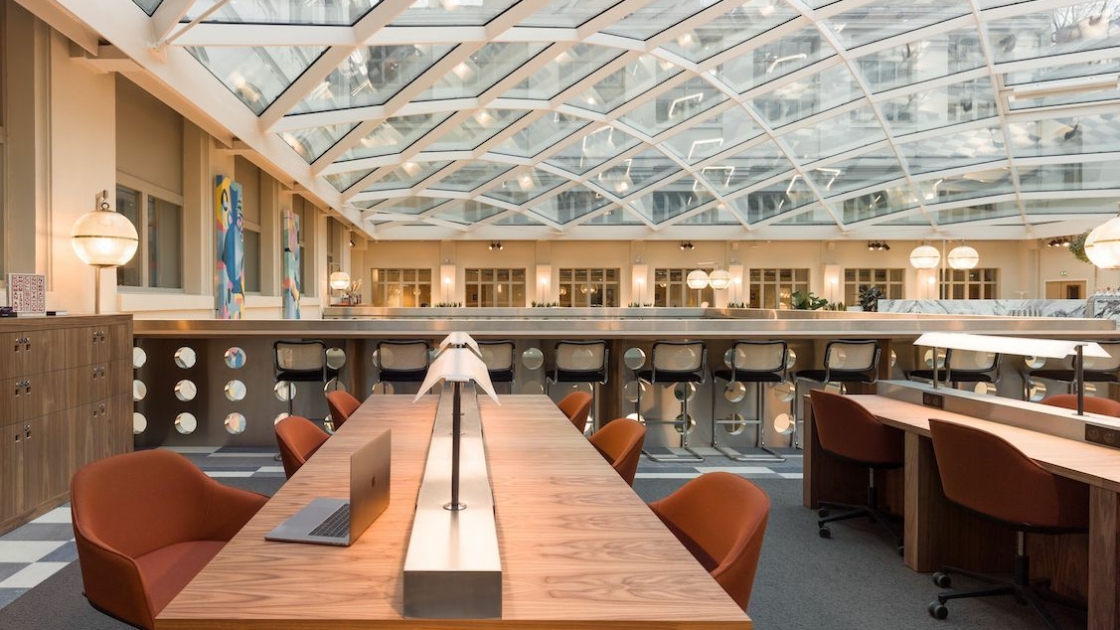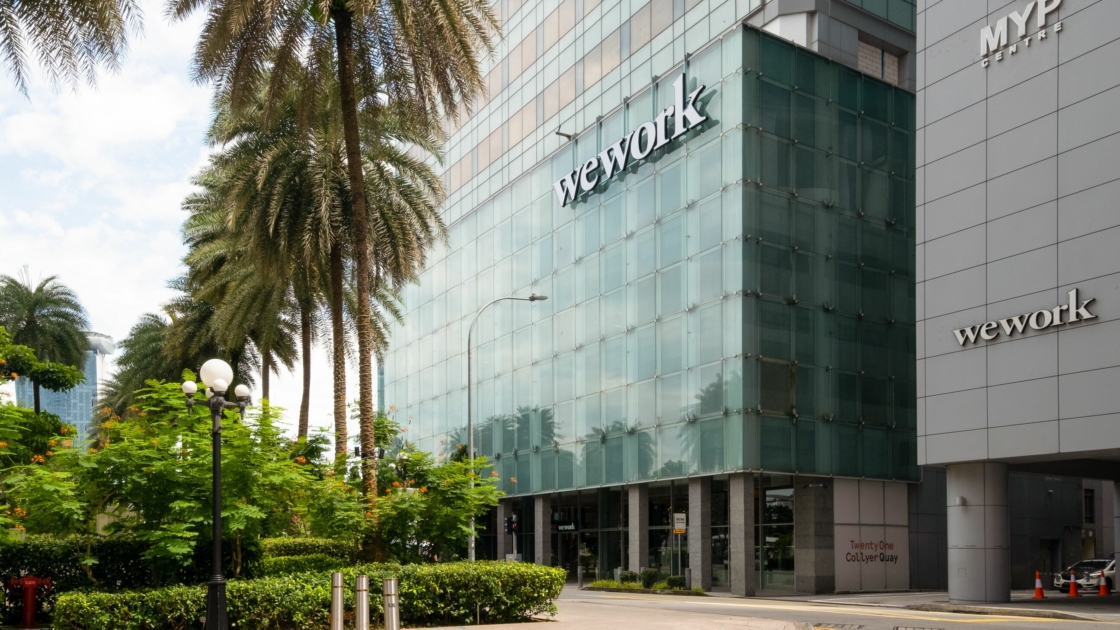With more than a million buildings in New York City—and upward of 550 million square feet of office space—finding a suitable space for you and your team brings a wealth of unique challenges. There is extreme variety in the types of offices available, so you must consider city-specific factors like access to transportation, types of neighborhoods, and surrounding business and lifestyle draws.
According to a 2017 report by the state comptroller, midtown and downtown Manhattan house the most office space of any city in the world. And with ongoing development in the Financial District, Hudson Yards, and other boroughs like Brooklyn and Queens, the amount of available workspace is increasing year over year.
Choosing a new office comes down to a variety of factors. Cost, location, and size are three considerations that almost every company must weigh, but there are also aspects unique to each business that will be informed by corporate culture, goals, and the needs of employees.
What are the most important factors when renting office space in New York City?
With this in mind, we spoke to seven executives about the most important factors to consider when renting office space in New York City.
1. Attracting talent and engaging employees at Wolters Kluwer
In searching for a new location to base their New York City operations, global software and services provider Wolters Kluwer considered several factors, including business requirements, real estate market assessment, and the needs of stakeholders. A key criterion was finding space to help attract a “high-performing, productive, and diverse” talent pool.
“We want to create a great workplace in order to continue to attract and retain and develop our workforce,” says Martijn Westerink, vice president of corporate real estate. Workforce trends also influence his decision, including “employee engagement of current and future talent pool, globalization, mobility, technology, sustainability, and financials.”
Earlier this year, Wolters Kluwer, which is headquartered in the Netherlands and employs more than 19,000 people worldwide, opened its new office in the Financial District. The key reasons for choosing this location included the office space’s amenities and the neighborhood itself.
“The design of the office needs to support interaction, collaboration, and mobility, while also incorporating company space standards, state-of-the-art technology, and facilities to host programming events,” Westerink says.
Then he searched for a “vibrant neighborhood with many area amenities, including restaurants, retail, and hotels.” Direct access to multiple transportation lines and major transportation hubs was also a must.
These decisions were not made in a vacuum—it was also important for the company to solicit input from all employees. “A comprehensive [communications] strategy helped keep employees informed and engaged by providing ‘controlled choices’—a collective process for actionable choices made by our employees leading to an overall consistent company design for the new work environment.”
2. Speed and space at Oscar Health
When your business takes off in New York City, it can really take off, and for health-tech company Oscar Health, the most important part of finding office space in New York City was speed.
“We had outgrown our old space by a lot, and it was happening very quickly. We were ready for something new, aesthetically speaking, as well as size-wise and utility-wise—right away,” says Charlie Mirisola, workplace operations manager at Oscar.
The company, which serves 14 regions across the U.S. and employs more than 500 people in New York City alone, partnered with WeWork to design and build their new headquarters at One Hudson Square in SoHo. “WeWork could match the speed that we needed this project completed in, which was breakneck for something like this,” Mirisola says.
Beyond timeline, the team at Oscar Health needed a workspace that caters to different work styles and facilitates cross-departmental collaboration. Specifically, the new Oscar Health office combines breakout spaces, different-size meeting rooms, standing desks, and comfortable living rooms.
3. Flexibility and surroundings at DailyPay
Tech company DailyPay has experienced rapid growth since its founding in 2015. Having received five rounds in total—and $9 million in Series B funding in February 2018—the New York City startup is revolutionizing the financial services sector by empowering consumers to control when they receive their wages.
Employee brand manager Mariele Marki says the biggest challenge in choosing a headquarters location was (and still is) finding space to accommodate the company’s growth.
“Cost is the first challenge in Manhattan. Next is the size of the physical space, as we have had to split up between a few levels—we would ideally love to have everyone on the same floor, but as we grow we realize that will always be difficult. Then there is the ability to make sure business and employee needs are met,” Marki says. “With our growth we know we will need to begin our search for our new headquarters in New York City sooner than we had anticipated.”
The way leadership deals with this uncertainty at DailyPay involves honest communication with employees and balancing three factors—”our size, the amount of time we have in our space, and the constant question of what impact this will have on our employees.” The team recently settled into an office space in the Financial District.
“FiDi is the most central point when you consider people coming from Brooklyn, New Jersey, Connecticut, or flying into or out of Newark,” Marki says. “There are lots of great spaces where we are for social activity, and it’s also New York City—we have so much so close by.”

4. Logistics and room to scale at Brooklinen
When moving into their first office space in 2014, Vicki and Rich Fulop at luxury linen company Brooklinen needed to maintain focus. It was just the two of them running the company in 2014 (originally from their living room) and they didn’t have time to deal with logistics like real estate brokers, internet connections, and office supplies.
For this reason, they chose WeWork: “Every logistical thing that would take hours away from focusing on our business, WeWork takes care of,” says Vicki.
Since then, the team has grown to more than 30 people, and this ability to scale, without having to worry about finding new office space, is why Brooklinen still calls WeWork Dumbo Heights home.
“We moved in when we were only two people. Now we are one of the biggest teams here,” Rich says. “With the speed the company is moving, seeing six months in advance can be a challenge. At WeWork you can move offices, lease another office, take out a wall (…), sometimes within a week.”
5. Cost and collaboration at Simon Data
Marketing and data platform Simon Data was founded in New York in 2014, and co-founder and CEO Jason Davis says the city presents a great opportunity for founders and entrepreneurs. “Ultimately, we came to New York for the startup climate and because our primary investors are East Coast–based,” he says. The catch? It’s expensive.
“There’s a ton of opportunity, but it comes at a cost, so every penny is important,” Davis says. “When we were just getting started, we would move every six to nine months. We’d find some extra space and a few desks, often through our network of peers and colleagues in the startup world.”
Having built a business from the ground up before, Davis knew to avoid some common missteps—and part of this was investing in the right space. “In a young company, collaboration is critical, and the space you provide dictates when and how it can occur,” Davis says.
“Whether that means providing big open spaces for everyone to exchange ideas on a level playing field, or conference rooms for digging into an important project, the types of spaces available to your team will impact how they work together and what kind of work they produce.”
The hustle and investment has paid off: Now Simon Data employs more than 80 people, and in August, it secured $30 million in Series C funding. “As a business leader, you’re responsible for all the utilities and services that make an office work,” Davis says.
6. Productivity and work-life balance at Slack
For collaboration-software platform Slack, headquartered in San Francisco, the office is just as important as its surroundings. When opening office space in New York City, the executive team was looking to manifest the benefits of Slack as a tool: They wanted office space that would also drive productivity and foster meaningful interactions.
“When I look at the most meaningful and impactful workplaces, I think there’s a deep alignment between tools, culture, and spaces,” says Deano Roberts, vice president of global workplace and real estate. “Slack is a collaboration hub where people can come together to do the best work of their lives—WeWork is a physical manifestation of that.”
Slack partnered with WeWork to build its New York offices—one near Washington Square and one near Union Square—and Roberts says it was this streamlining of experience and functionality, alongside the economic impact, that helped seal the deal.
“For any company, expenditures on capital is a dollar that we didn’t spend on R&D, it’s a dollar that we didn’t spend on marketing, it’s a dollar that we didn’t spend on headcount,” Roberts says.

7. Connection and commute times at Talkwalker
Social-listening platform Talkwalker—headquartered in Luxembourg with offices in New York, San Francisco, Singapore, and Frankfurt—has grown since its 2009 founding to service more than 1,000 brands and employ more than 200 people.
In opening their New York City location, the Talkwalker team was looking for a technologically advanced space to keep their business fully functioning and secure. “As an IT company, we wanted to make sure we had a partner that never let us down in terms of connectivity,” says Todd Grossman, CEO of the Americas.
Grossman and his team also believe the design and location of office space should encourage employees to come to work. Part of this energy is cultivated by atmosphere and company culture, and another part comes from convenience.
“We spend more than 70 to 80 percent of our time working and, as a result, it’s important to have an environment that fosters collaboration and energy,” Grossman says. “An ideal workspace inspires employees to come into the office, even if they have the opportunity to work from home.”
Talkwalker’s office in midtown Manhattan puts employees close to public transportation and surrounds them with a myriad of dining and happy hour options.
“Ideally, employees should have to walk no more than five to 10 minutes to transportation hubs,” Grossman says. “Another consideration is to have the United Nations of food at your fingertips; it would be a shame not to have access to New York City’s diverse culinary options. You can have the best office, but if it’s in the worst location, no one will want to work there.”
With so many must-haves, the challenge for Talkwalker was budget. Grossman chose a WeWork solution that could grow and expand with the company’s vision.
“At the end of the day, it comes down to budget. For someone who is building a business, the opportunity to leave the little things and focus on the bigger picture is essential,” he says. “WeWork serves as a partner that is able to take care of the office administration. We started in one small office, acquired a bigger office, and continued expanding. WeWork was a true partner and gave us first right of refusal for any offices that became available.”
Choosing the right office space in New York City requires balancing the often high cost of the space with the needs of your employees and organization. WeWork’s affordable, flexible solutions help companies of every size create an environment that will meet the unique needs of their business while empowering them to scale.
For more tips on improving workspace and inspiring teams, check out all our articles on Ideas by We.
Caitlin Bishop is a writer for WeWork’s Ideas by We, based in New York City. Previously, she was a journalist and editor at Mamamia.com.au in Sydney, Australia, and a contributing reporter at Gotham Gazette.







